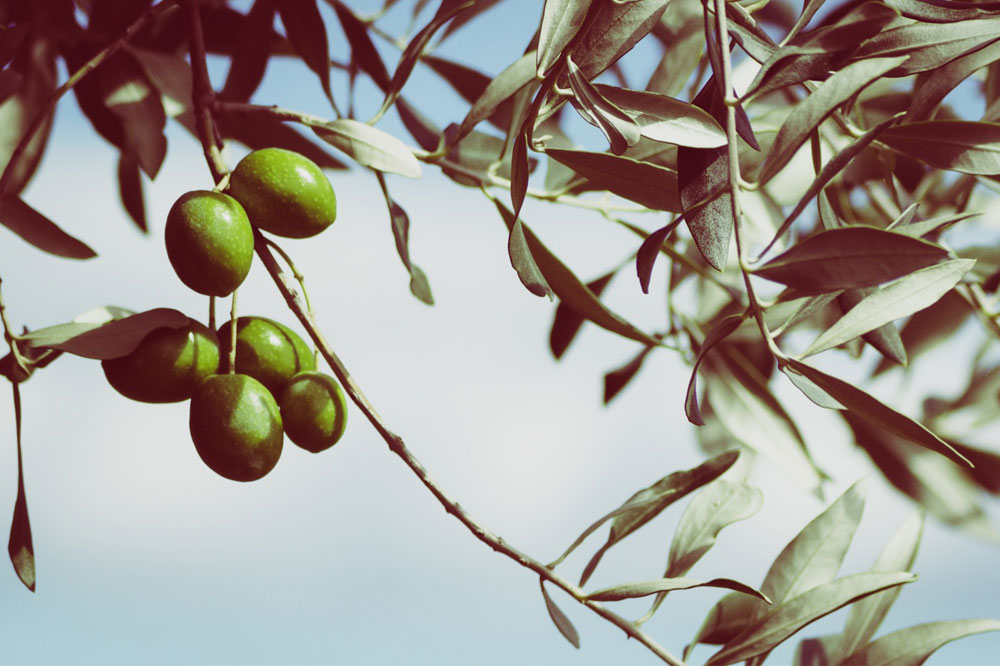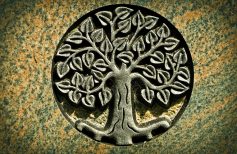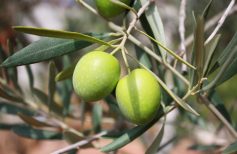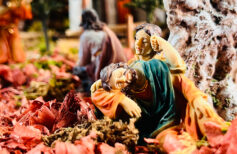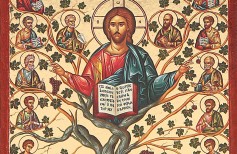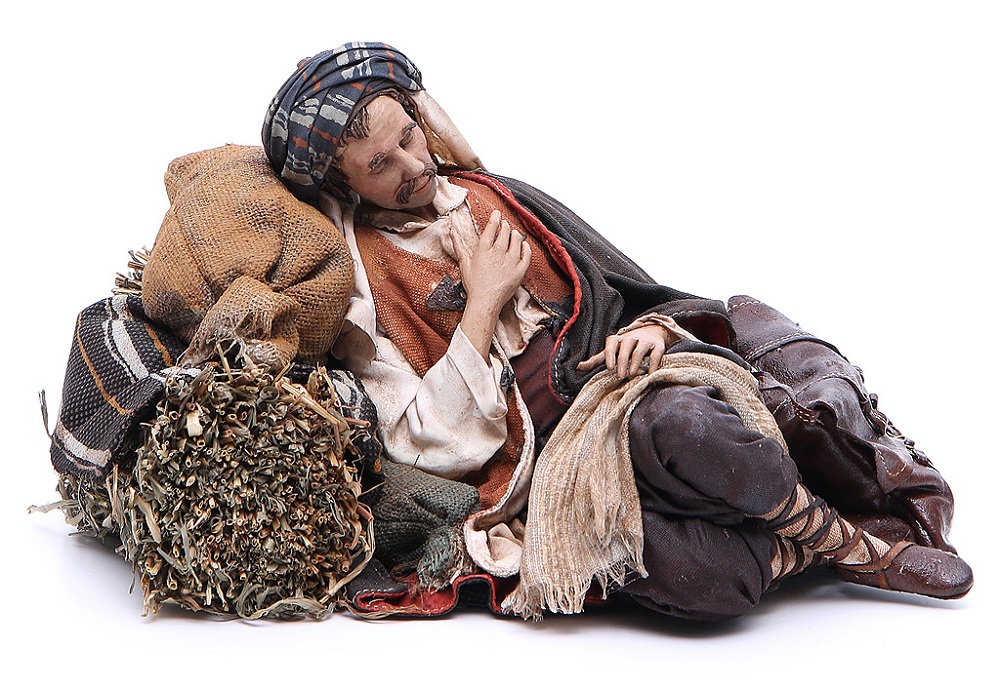Contents
- 1 Spruce, Peccio (Picea abies)
- 2 Acacia, Robinia (Robinia pseudoacacia)
- 3 Judea tree (Cercis siliquastrum)
- 4 Aloe (Aloe vera)
- 5 Angelica
- 6 Aquilegia (Aquilegia vulgaris)
- 7 Mary’s thistle (Silybum marianum)
- 8 Carrubo (Ceratonia siliqua)
- 9 Cedar (Cedrus)
- 10 Onion (Allium cepa)
- 11 Fig tree (Ficus)
- 12 Wheat (Durum wheat)
- 13 Lily (Lilium)
- 14 Almond (Prunus dulcis)
- 15 Apple tree (Malus domestica)
- 16 Olive tree, or Olive tree (Olea europaea)
- 17 Passiflora
- 18 Buttercup (Ranunculus acris)
In ancient times, the relationship between man and nature was much closer than itis today. Everyday life was inextricably linked to the alternation of the seasons, atmospheric precipitations, excessive heat, or excessive cold. Our ancestors certainly did not live an easy existence, victims of a world too big and insidious, for them, too difficult to subject, to control. The comforts and security that we tend to take for granted, the effective drugs against diseases that are trivial for us, but which once claimed thousands of victims, the services available today for everyone, are conquests that have arrived in a relatively long time short, for the history of mankind, infinitesimal in the life of our planet.
Now we want to take a step back, when man lived, willy-nilly, more in close contact with the environment around him, and his survival depended exclusively on how he would have been able to take advantage of the few resources made available to him, to feed, cover, protect yourself.
In this world the existence of man depended very largely on trees and plants. From these our ancestors drew nourishment, in the form of berries and fruits, timber to build huts, houses, palisades to defend themselves, firewood to illuminate the night and keep warm, but also precious distillates and remedies to cure diseases.
Precious allies, trees, faithful friends, but also mysterious, silent sentinels and, perhaps, guardians of ancestral knowledge. So they had to consider them as ancient men, because since the dawn of time the trees have been given great powers and a role of communication between the various levels of existence. In fact their roots sank in the ground, their trunks grew robust and lush on the surface, and their tops soared towards the sky, sometimes getting lost in the clouds. It is not difficult to imagine how, in the minds of our ancestors, this prodigious development coincided with the ability to connect the world of the Underworld, that of Men and that of the Gods.
Not only that, but often the trees were assimilated directly to the deities. There is no religion of the past that does not contemplate myths about trees. For example, the ancient Egyptians believed that the goddess Nut shed the water of immortality on the soul of the dead from a Sycamore tree, while for the Scandinavians the birth of the universe itself was linked to that of Yggdrasill, an immense ash tree. , which was rooted in the past, present and future, and embraced with its foliage all the earth and sky. For the Sioux, a large tree was at the center of the Circle of the World.
The Greek myths are then very rich in references to the trees: think of the golden apples in the garden of the Hesperides, which gave immortality, to the olive tree sacred to Athena, to the laurel and cypress dear to Apollo, and so on.
Religious and esoteric symbols are often inspired by trees or parts of trees. The tree of life is a universal image, a powerful archetype that takes on infinite forms. The ancient Egyptians often portrayed onions in the hieroglyphs and in the pharaohs’ tombs: for them they were very effective to pass through the afterlife. The cypress, born from the metamorphosis of the young Ciparisso by Apollo, has always been a symbol of mourning and eternity.
Even the Christian tradition has attached great importance to plants.
Ancient and New Testament contain numerous mentions to plants, flowers and shrubs. Others have been associated over time to the cult of Our Lady, of Jesus or of some saints. We want to examine those that seem to us more significant and interesting.
Spruce, Peccio (Picea abies)
It may seem trivial to want to start from the fir tree, what we all know as children as a Christmas tree, but it is not. Before becoming a symbol of Christendom, associated with the Resurrection of Christ, like all evergreens, the Fir was a tree that recalled the idea of longevity and immortality. In antiquity the Fir was used for sacrificial fires and divination. The Celts associated it with fertility, the Greeks with hope. The diffusion of the Christmas trees, partly out of Christian symbolism, it has nevertheless linked it to a sense of warmth, joy and family that goes well with the Christmas tradition. The Christmas Tree recalls the beginning of the annual cycle and therefore of life. The spruce instead it represents Christ in his human incarnation, as a symbol of sacrifice, death and eternal life.
Christ, like all evergreens, the Fir was a tree that recalled the idea of longevity and immortality. In antiquity the Fir was used for sacrificial fires and divination. The Celts associated it with fertility, the Greeks with hope. The diffusion of the Christmas trees, partly out of Christian symbolism, it has nevertheless linked it to a sense of warmth, joy and family that goes well with the Christmas tradition. The Christmas Tree recalls the beginning of the annual cycle and therefore of life. The spruce instead it represents Christ in his human incarnation, as a symbol of sacrifice, death and eternal life.
Acacia, Robinia (Robinia pseudoacacia)
The wood of Acacia is very hard and resistant, which is why the various religions have attributed to this plant the idea of strength, of vigor. Among the Egyptians and the Chinese it was a tree linked to knowledge. In Egyptian culture in particular Acacia was the initiatory tree: it was believed that many Egyptian deities were born under the Acacias, and the tree itself was a symbol of the transition from ignorance to knowledge. In the biblical context it is worth remembering that the Noah’s Ark was built entirely from the hard acacia wood.
Judea tree (Cercis siliquastrum)
Originally from Israel, this tree is also called the “Tree of Judah”. According to the Christian tradition it would be the tree to which Judas hanged himself after betraying Jesus. The flowers that bloom directly from the trunk symbolize the tears of Christ, while their deep pink color represents the shame of Judas for his frightful crime.
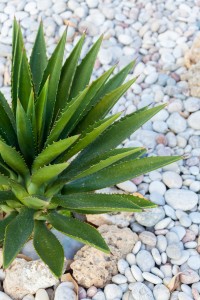 Aloe (Aloe vera)
Aloe (Aloe vera)
Known since ancient times for its extraordinary pharmaceutical properties, Aloe was used by the Egyptians to embalm corpses. Even the body of Jesus should have followed the same destiny. In fact it is said that Nicodemus brought the Aloe to perfume the sheet and, presumably, to embalm it. For many ancient cultures, Aloe was a symbol of eternal life, of immortality.
Angelica
It’s very sweet scent has earned it the name of “grass of the angels”, or even “grass of the archangels”, since Raffaele himself would have made known his exceptional healing powers to men.
Effective against many diseases and disorders, in ancient times it was placed around the necks of children to protect them from harm.
Aquilegia (Aquilegia vulgaris)
Aquilegia is also known as the “Gloves of our Lady”. It owes this original name to its bizarre shape: in fact its flowers are formed by five horns with petals that recall the fingers of one hand, the hand of the Madonna, in fact.
Mary’s thistle (Silybum marianum)
Typical of warm and sunny areas, the cardo di Maria is linked to the legend that, during the flight from Judea to Egypt to escape Herod, Maria hid the little Jesus under a thistle bush to feed him. A little of his milk fell on the plant, whose leaves have since then white ribs.
Carrubo (Ceratonia siliqua)
Together with the Cedar, Aloe and Fico, the Carob tree was widespread in Galilee. It does not have a particular symbolic meaning, but it is remembered because it appears in the parable of the Prodigal Son.
Cedar (Cedrus)
Originally from China and India, it was the first citrus to be grown in Israel. Tradition has it that the temple of Jerusalem, the palace of Solomon and the Labyrinth of Minos, had majestic columns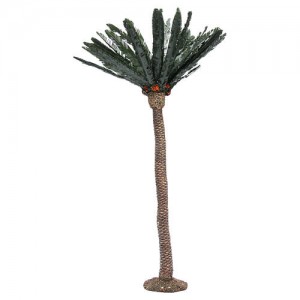 of Cedar of Lebanon supporting the ceilings.
of Cedar of Lebanon supporting the ceilings.
During the Feast of Tabernacles the Jews used its foliage, along with palm branches and myrtle branches. Around the world, palm is a type of tree that is always included in the cribs. There palm for nativity scene symbolizes the connection between man and the mysteries of life. It also constitutes a constant during the holy week period. The Jews use cedar fruits during their celebrations. Cedar is a tree that also symbolizes knowledge.
Onion (Allium cepa)
If for the Egyptians the onion was a pass for the afterlife and for the Greeks an emblem of valour and courage linked to the God of War Ares, in the Bible it is a symbol of sin and falsity. The pain and discomfort caused to the eyes by the onion recall the guilt of those who commit sin, while the many layers of which it is composed represent deception and deception.
Fig tree (Ficus)
The Fico recurs as a symbolic tree in many religions and cultures, from Islam to Christianity and Judaism, but also in Hinduism. He was already known and appreciated in ancient Greece, where he was associated with Dionysus and Athena. It is mentioned both in the Old and in the New Testament. In fact it was one of the seven plants of the Promised Land. In all civilizations it has always represented roughly the same values: abundance, fecundity, prosperity, earthly and otherworldly happiness, but also strength, light and knowledge.
Wheat (Durum wheat)
 Wheat is one of the most cited plants in the Bible. Its importance is obvious, given that the flour obtained from it was at the base of the feeding of the territories that act as theatre to the events of the Bible, consumed in the form of semolina, bread, focaccia, etc. In ancient civilizations, wheat was a symbol of rebirth and the alternation of the seasons. In fact, the cereal remains buried under the ground and then born in spring, just as the soul passes from shadow to light. Among the Egyptians he was associated with Osiris, among the Greeks at Demeter.
Wheat is one of the most cited plants in the Bible. Its importance is obvious, given that the flour obtained from it was at the base of the feeding of the territories that act as theatre to the events of the Bible, consumed in the form of semolina, bread, focaccia, etc. In ancient civilizations, wheat was a symbol of rebirth and the alternation of the seasons. In fact, the cereal remains buried under the ground and then born in spring, just as the soul passes from shadow to light. Among the Egyptians he was associated with Osiris, among the Greeks at Demeter.
In the Christian context, Jesus is associated with the seed of wheat that dies in the earth to be reborn, to the ear cornered by men, to the grains sifted. From all this suffering, from all this violence, it is born in nourishment that allows us to live. As Jesus died for all of us, his example, his words, his memory are seeds that fall and take root in the fertile earth of our hearts, to produce new good fruits.
Lily (Lilium)
Symbol of beauty and purity par excellence, but also of virginity and fecundity, the Lily is a beautiful flower, with an intoxicating scent.
For the Jews it was a symbol of beauty and fertility, for Christians it is associated with the concepts of sanctity and resurrection. In Christian iconography it is associated with the Virgin, and St. Joseph is often represented with a stick from which lilies bloom.
Almond (Prunus dulcis)
Being the first tree to blossom with the beautiful season, it has been considered by many ancient civilizations as a symbol of fertility, rebirth and resurrection. In the Bible it is often cited as a symbol of God’s promise of salvation to the chosen people. From the stick of Aronne sprouted white flowers that gave an almond fruit. Instead, the Christian tradition associates it with the Virgin, once virgin and fruitful.
Apple tree (Malus domestica)
The apple tree occurs in many mythological traditions, being a very diffused tree. In Greek mythology the apple fruit is the protagonist of many myths, from that of the golden apples kept in the garden of the Hesperides, which gave immortality, to the pommel of discord, disputed between three goddesses and donated by Paride to Elena, which triggered the Trojan War. In Scandinavian mythology, apples were the food of the gods.
In the Jewish and Christian context, as we all know, the apple was the forbidden fruit, which brought knowledge to those who tasted it, and which determined the expulsion of Adam and Eve from the earthly Paradise.
Olive tree, or Olive tree (Olea europaea)
Considered by many peoples and civilizations of the past a sacred tree and a symbol of peace. In ancient Greece there was the leader of the winning athletes and it was dear to Athena, who had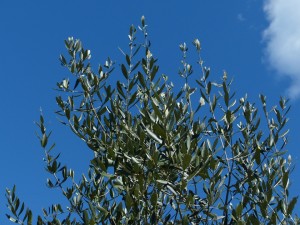 given it to the men. In honour of the goddess, the Ulivo also became a symbol of chastity.
given it to the men. In honour of the goddess, the Ulivo also became a symbol of chastity.
In Jewish culture it was instead a symbol of justice and wisdom. When the Flood ended, Noah sent a dove in recognition, and it returned with a branch of Olive tree in its beak, a sign that the wrath of God had subsided and the men had been forgiven.
On the feast of the palms, in the Christian context, the olive tree represents Jesus who, dying on the cross and sacrificing himself, becomes a symbol of reconciliation between God and men. Moreover, Jesus was welcomed to Jerusalem by a crowd that waved palm fronds and branches of Olivo, and spent his last night in the Garden of Olives.
Olive fruits also have a strong religious value: olive oil is at the base of the Chrism, with here the celebrants baptize the new born, mark the boys who receive the Confirmation, consecrate the new priests and impart the extreme unction.
Passiflora
Passiflora, or “flower of the Passion” recalls the Passion of Christ, whose emblem is the same: the pistil has three stigmata that symbolize the nails of the cross, five specks that recall the five wounds of Jesus, while the corolla presents 72 filaments like 72 were the thorns of the crown on the head of Our Lord, and twelve petals as twelve were the apostles. Again, its leaves are sharp, like spearheads and within the flower there are 30 rounded slits, like the 30 denarius for which Judas betrayed Jesus.
Buttercup (Ranunculus acris)
Symbol of beauty and wealth, but also of their transience, being a very beautiful flower, but that lasts very little. It often occurs in the Bible. According to tradition, Jesus transformed the stars into Ranuncoli to make a gift to his mother, Our Lady, which is why these flowers are used to decorate the altars during Holy Week.

